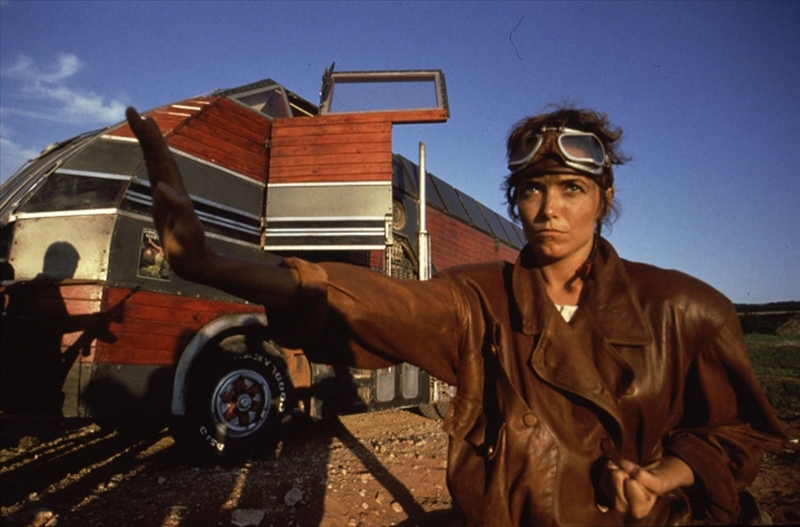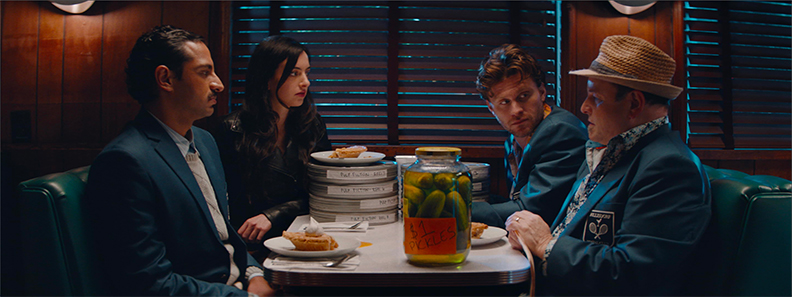
Some Threats Don’t Have Fangs
MOVIE REVIEW
To Kill a Wolf
–
Genre: Drama, Mystery
Year Released: 2024, 2025
Runtime: 1h 32m
Director(s): Kelsey Taylor
Writer(s): Kelsey Taylor
Cast: Maddison Brown, Ivan Martin, Michael Esper, Kaitlin Doubleday, David Knell, Dana Millican, Jessica Catalano, Grant Jay, Julie Elizabeth Knell, Annika Cowles
Where To Watch: in select theaters beginning August 1, 2025, see where it will be here www.tokillawolf.com shown at the 2025 Santa Barbara International Film Festival
RAVING REVIEW: Some films demand your attention without raising their voice. They linger, not through grand spectacle but through the weight of their atmosphere, the silences between words, and the echoes that refuse to fade. TO KILL A WOLF operates within this space, a quiet but deeply unsettling experience that strips away fairy tale illusions and forces a confrontation with reality. Director Kelsey Taylor crafts an intimate, slow-burning drama that challenges perceptions of danger and safety, reshaping a familiar story into something haunting. It’s a film that doesn’t just ask questions but compels the audience to sit with their discomfort, offering no easy reassurances.
Set against the majestic backdrop of the Oregon wilderness, the story follows a man who has long since abandoned the world beyond. His isolated existence is shattered when he stumbles upon a barely conscious teenage runaway battling the elements. What begins as a reluctant act of kindness quickly becomes more complicated, forcing both to navigate their emotions and unresolved pasts. Survival is no longer just about the elements—it’s about trust, vulnerability, and the realization that the real threats aren’t always lurking in the dark.
Anchoring this journey are two performances that elevate the film. Ivan Martin plays a man of few words, but his presence speaks volumes. Every pause, every hesitation, and every subtle shift in his being reveal layers of grief and regret. He embodies a character who has spent years withdrawing from society, only to find himself unwillingly pulled back in. Maddison Brown, in contrast, delivers a performance rooted in quiet intensity, portraying someone hardened by experience yet unable to abandon hope. Their on-screen interactions are filled with unspoken tension and guarded exchanges that feel authentic and unpredictable.
Rather than relying on traditional storytelling, the film explores the story through shifting perspectives, using fractured timelines to reveal key details piece by piece. Flashbacks are more than just exposition—they reshape our understanding of the characters, constantly forcing the audience to reconsider their assumptions.
Cinematographer Adam Lee crafts a visual language that emphasizes isolation, using wide shots to highlight the characters’ insignificance against the vastness of nature and close-ups to capture the weight of their unspoken emotions.
The film excels in its ability to subvert expectations. Traditionally, stories like this have clear moral lines—good versus evil, safety versus danger. TO KILL A WOLF discards these binaries, forcing its characters (and its audience) to grapple with the uncomfortable reality that sometimes the real threat comes from where you least expect it. The film challenges who should be feared and who can be trusted, blurring the lines between protector and predator.
Among the supporting cast, Michael Esper delivers one of the film’s most unsettling performances as Carey. His presence carries an underlying menace that never needs to be explicitly stated—his ability to shift from warmth to quiet intimidation makes him so effective. This performance lingers, a reminder that not all threats announce themselves.
More than just a new take on a fable, TO KILL A WOLF deconstructs the idea of fairy tale logic entirely. It asks difficult questions about the nature of trust, the consequences of trauma, and how people learn to survive—not just physically but emotionally. It doesn’t present trauma as something that can be neatly resolved, nor does it offer grand catharsis. Instead, it acknowledges that healing is often slow, incomplete, and rarely follows a straight path.
Kelsey Taylor has crafted a debut that refuses to conform to expectations, delivering an understated yet emotionally resonant film. It’s a story that demands patience and rewards those willing to engage with it on its terms. Those who connect with its quiet intensity will find a film that stays with them, urging them to reconsider what they thought they knew about safety, survival, and the true nature of the wolves that walk among us.
Please visit https://linktr.ee/overlyhonestr for more reviews.
You can follow me on Letterboxd, Instagram, Twitter, and YouTube. My social media accounts can also be found on most platforms by searching Overly Honest Reviews.
I’m always happy to hear from my readers; please say hi or send me any questions about movies.
[photo courtesy of ALL THE BETTER, DETENTION FILMS, HUNGRY BULL PRODUCTIONS, MOO STUDIOS, SLATED]
DISCLAIMER:
At Overly Honest Movie Reviews, we value honesty and transparency. Occasionally, we receive free items for review, including DVDs, Blu-rays, CDs, Vinyl, Books, etc. We assure you that these arrangements do not influence our reviews, as we are committed to providing unbiased and sincere evaluations. We aim to help you make informed entertainment choices, regardless of our relationship with distributors or producers.
Amazon Affiliate Links:
Additionally, this site contains Amazon affiliate links. If you purchase through these links, we may receive a commission. This affiliate arrangement does not affect our commitment to honest reviews and helps support our site. We appreciate your trust and support in navigating these links.



Average Rating